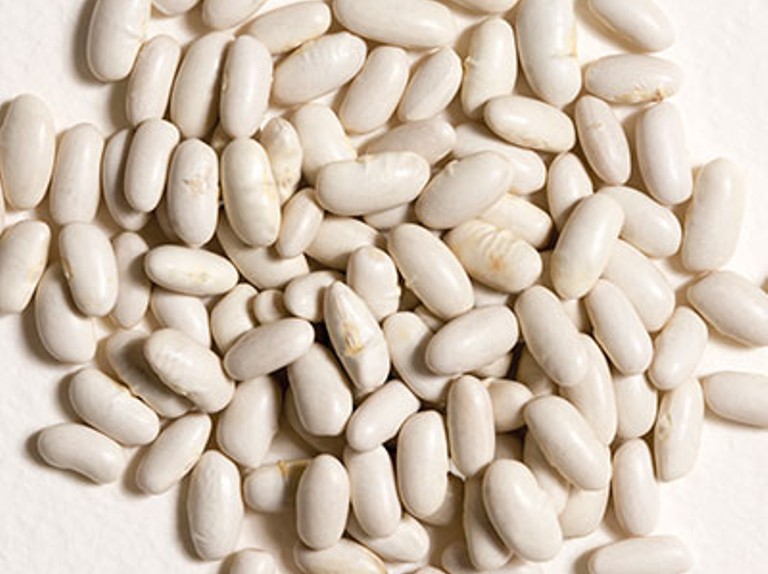Garlic, also known as Allium sativum, is a species in the onion genus. It has been used as a culinary and medicinal ingredient for thousands of years, dating back to ancient civilizations such as the Egyptians and Greeks. The unique flavor and aroma of garlic make it a staple ingredient in many cuisines around the world, but it also has a range of health benefits that have been studied extensively in recent years.
Garlic contains several compounds, such as allicin, that have been shown to have antimicrobial, antioxidant, and anti-inflammatory properties. These compounds may also help to reduce cholesterol levels, lower blood pressure, and improve cardiovascular health. Additionally, garlic has been linked to cancer prevention and immune system support.
In this article, we will delve deeper into the various health benefits of garlic and the scientific evidence behind them. We will also explore different ways to incorporate garlic into your diet and how to use it for medicinal purposes. Whether you are a garlic lover or simply curious about its potential health benefits, this article will provide you with valuable insights into this ancient and versatile ingredient.

Introduction
1.1. Background and historical use of garlic
Garlic (Allium sativum) is a widely consumed plant that has been used for culinary and medicinal purposes for thousands of years. Native to Central Asia, it has been cultivated and utilized by various cultures around the world, including ancient Egyptians, Greeks, Romans, Chinese, and Indians. The historical use of garlic in traditional medicine systems, such as Ayurveda and Traditional Chinese Medicine, highlights its diverse health-promoting properties, which can be attributed to its unique composition of bioactive compounds, including organosulfur compounds, vitamins, and minerals.
1.2. Purpose of the study
The purpose of this study is to provide a comprehensive review of the current scientific literature on the properties and benefits of garlic, exploring various aspects of its health-promoting effects, potential side effects, and applications in both traditional and modern medicine. The study aims to examine the available evidence on the pharmacological activities of garlic, including its antimicrobial, anti-inflammatory, anticancer, and cardiovascular benefits, as well as its potential role in sustainable agriculture and ecological practices. By providing an in-depth analysis of the various dimensions of garlic’s properties and benefits, this study seeks to contribute to a better understanding of the potential applications of garlic in promoting health, well-being, and environmental sustainability.

2. Garlic botany and cultivation
2.1. Plant description and classification
Garlic (Allium sativum) is a species in the onion genus, Allium. It is a close relative of onions, shallots, leeks, and chives. Garlic is a perennial plant, typically grown as an annual, and has a bulb made up of individual cloves enclosed in a papery outer layer. The plant also produces a flowering stalk, called a scape, which can be harvested and consumed. In this section, the morphological features of the garlic plant will be described in detail, along with its classification within the plant kingdom.
2.2. Growing conditions and cultivation techniques
Garlic can be grown in a variety of climates, but it generally prefers cool to moderate temperatures, well-draining soil, and ample sunlight. The ideal soil pH for garlic is between 6.0 and 7.0. This section will discuss the various factors that affect garlic growth, including temperature, sunlight, soil, and water requirements. The timing of planting, which can vary depending on the type of garlic (hardneck or softneck) and the specific climate, will also be covered. Additionally, cultivation techniques such as planting methods, spacing, fertilization, and pest control will be explored.
2.3. Harvesting and storage
Harvesting garlic typically occurs when the leaves begin to turn yellow and die back, usually several months after planting. Careful handling during harvest is crucial to prevent bruising and damage to the bulbs. This section will discuss the signs that indicate when garlic is ready for harvest, as well as best practices for digging up and handling the bulbs. After harvest, garlic needs to be properly cured and stored to maintain its quality and prevent spoilage. The curing process, which involves drying the bulbs in a well-ventilated area, and optimal storage conditions, such as temperature and humidity, will be examined. Tips for selecting the best bulbs for long-term storage and replanting will also be provided.

3. Chemical composition of garlic
3.1. Overview of major compounds
Garlic contains various bioactive compounds that contribute to its unique taste, aroma, and health benefits. These compounds include organosulfur compounds, flavonoids, saponins, and essential oils. This section will provide an overview of these major compounds found in garlic, discussing their roles in the overall chemical composition and biological activity of garlic.
3.2. Allicin: formation and stability
Allicin is one of the most important organosulfur compounds in garlic, responsible for its distinct aroma and many of its health benefits. It is formed when garlic is crushed or chopped, as the enzyme alliinase converts the compound alliin into allicin. Allicin is an unstable compound that quickly breaks down into various other sulfur-containing compounds, such as diallyl disulfide, diallyl trisulfide, and ajoene. This section will explain the process of allicin formation, its stability, and its transformation into other bioactive compounds.

4. Nutritional benefits of garlic
4.1. Macronutrients and micronutrients
Garlic is a nutrient-dense food, containing essential macronutrients such as carbohydrates, proteins, and dietary fibers, as well as micronutrients like vitamins and minerals. Some of the key vitamins and minerals found in garlic include vitamin C, vitamin B6, manganese, selenium, and calcium. This section will provide a detailed overview of the nutritional composition of garlic, highlighting its macronutrient and micronutrient content, and discussing their roles in maintaining overall health.
4.2. Antioxidants and phytonutrients
Garlic is a rich source of antioxidants and phytonutrients, including organosulfur compounds, flavonoids, and polyphenols, which help protect the body against oxidative stress and damage caused by free radicals. These antioxidants and phytonutrients are believed to play a significant role in the various health benefits associated with garlic consumption. This section will delve into the antioxidant and phytonutrient content of garlic, focusing on their mechanisms of action and potential health benefits.
4.3. Effects on cholesterol and blood pressure
Several studies have shown that garlic can help improve cholesterol levels and reduce blood pressure, which are key factors in maintaining cardiovascular health. Garlic’s organosulfur compounds, particularly allicin, are thought to be responsible for these beneficial effects. This section will explore the existing research on the effects of garlic on cholesterol levels and blood pressure regulation, discussing the potential mechanisms through which garlic may exert these benefits and the implications for cardiovascular health.

5. Antimicrobial properties of garlic
5.1. Antibacterial activity
Garlic has been widely recognized for its antibacterial properties, which can be attributed to its organosulfur compounds, primarily allicin. It has been found to be effective against various types of bacteria, including both gram-positive and gram-negative strains. This section will discuss the research on garlic’s antibacterial activity, including its potential mechanisms of action, the range of susceptible bacterial strains, and its potential role in combating antibiotic-resistant bacteria.
5.2. Antiviral properties
In addition to its antibacterial effects, garlic also exhibits antiviral properties. The compounds responsible for this activity are still under investigation, but it is believed that the organosulfur compounds, along with other constituents, play a role in inhibiting viral replication and growth. This section will delve into the current understanding of garlic’s antiviral properties, highlighting the types of viruses that may be affected, the possible mechanisms of action, and the potential applications of garlic in the prevention and treatment of viral infections.
5.3. Antifungal and antiparasitic effects
Garlic has also demonstrated antifungal and antiparasitic properties, which can be attributed to its various bioactive compounds. These effects have been observed against a range of fungal species, such as Candida, Aspergillus, and Cryptococcus, as well as against parasites like Giardia and Trypanosoma. This section will examine the research on garlic’s antifungal and antiparasitic activities, discussing the potential mechanisms of action, the susceptible fungal and parasitic species, and the potential applications of garlic in the prevention and treatment of fungal and parasitic infections.
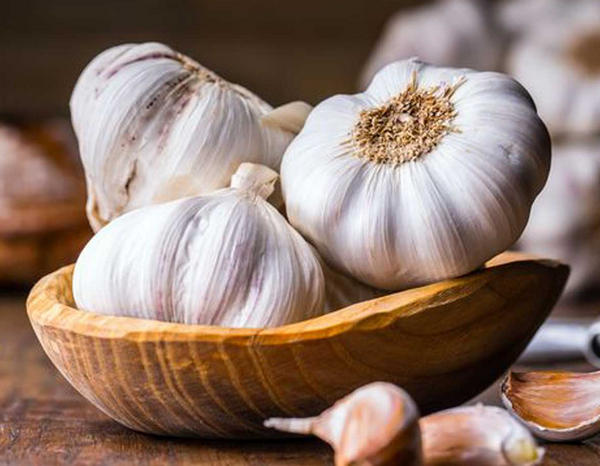
6. Anti-inflammatory and immune-boosting effects of garlic
6.1. Mechanisms of action
Garlic has been shown to exhibit anti-inflammatory properties due to its bioactive compounds, particularly its organosulfur compounds. These compounds can modulate the production of inflammatory mediators, such as cytokines and prostaglandins, as well as influence the activity of key enzymes involved in the inflammatory process. This section will delve into the mechanisms of action behind garlic’s anti-inflammatory effects, discussing how its various constituents interact with and modulate the body’s inflammatory pathways.
6.2. Effects on the immune system
Garlic has been found to have immunomodulatory effects, enhancing the function of the immune system by stimulating the activity of immune cells, such as macrophages, lymphocytes, and natural killer cells. Additionally, garlic’s antioxidant properties may help protect the immune system from damage caused by oxidative stress. This section will explore the research on garlic’s effects on the immune system, focusing on how its bioactive compounds may enhance immune function and contribute to overall health and disease prevention.
6.3. Reduction of inflammation-related diseases
Chronic inflammation has been linked to the development of various diseases, including cardiovascular disease, diabetes, cancer, and neurodegenerative disorders. Due to its anti-inflammatory and immune-boosting properties, garlic may play a role in reducing the risk of these inflammation-related diseases. This section will discuss the potential health benefits of garlic in the context of inflammation-related diseases, highlighting the existing research and the potential implications for disease prevention and treatment.
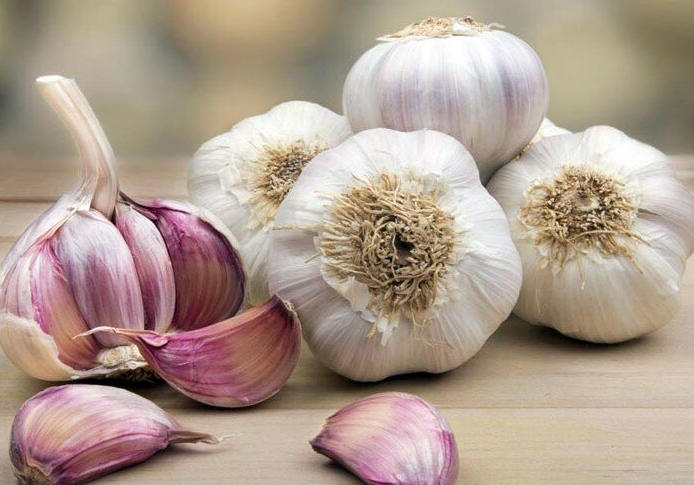
7. Anticancer properties of garlic
7.1. Epidemiological evidence
Numerous epidemiological studies have suggested an inverse relationship between garlic consumption and the risk of various types of cancer, including stomach, colorectal, and breast cancer. This section will review the epidemiological evidence linking garlic intake to a reduced risk of cancer, discussing the strengths and limitations of these studies and the potential factors that may contribute to these observed associations.
7.2. Mechanisms of action
Garlic’s anticancer properties can be attributed to its bioactive compounds, primarily its organosulfur compounds. These compounds have been found to exert their anticancer effects through multiple mechanisms, such as inducing apoptosis (programmed cell death), inhibiting cell proliferation, and suppressing angiogenesis and metastasis. Additionally, garlic’s antioxidant and anti-inflammatory properties may also play a role in its anticancer effects. This section will delve into the various mechanisms of action through which garlic’s constituents may exert their anticancer properties, highlighting the current understanding of how these compounds may help prevent or slow the progression of cancer.
7.3. Potential applications in cancer prevention and treatment
Given the growing body of evidence supporting garlic’s anticancer properties, there is increasing interest in exploring its potential applications in cancer prevention and treatment. This section will discuss the possible roles of garlic and its bioactive compounds in cancer prevention strategies, such as dietary interventions and chemoprevention. Additionally, this section will examine the potential use of garlic-derived compounds as adjuvant therapies in cancer treatment, highlighting the current state of research and the future directions for the development of garlic-based anticancer therapies.
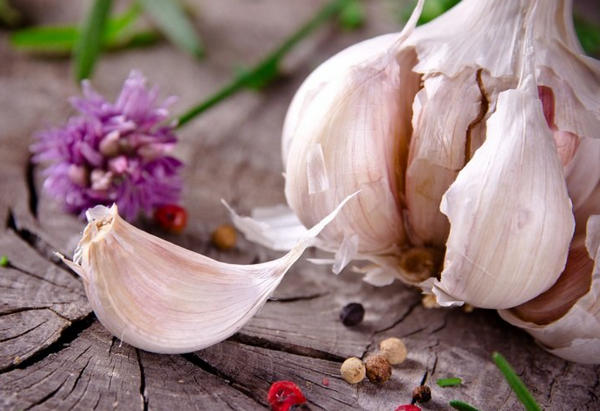
8. Cardiovascular benefits of garlic
8.1. Effects on blood pressure
Garlic has been shown to have a positive effect on blood pressure, particularly in individuals with hypertension. Its organosulfur compounds, such as allicin, are thought to be responsible for this effect, as they can help relax blood vessels and improve blood flow. This section will discuss the existing research on garlic’s effects on blood pressure, exploring the potential mechanisms through which its bioactive compounds may help regulate blood pressure and the implications for cardiovascular health.
8.2. Improvement of lipid profile
Regular consumption of garlic has been associated with improvements in lipid profiles, including a reduction in total cholesterol and low-density lipoprotein (LDL) cholesterol levels. The organosulfur compounds in garlic are believed to play a key role in these beneficial effects by modulating lipid metabolism and inhibiting cholesterol synthesis. This section will delve into the research on garlic’s effects on lipid profiles, discussing the potential mechanisms through which its bioactive compounds may help improve lipid metabolism and the implications for cardiovascular health.
8.3. Antithrombotic and antiatherosclerotic effects
Garlic has demonstrated antithrombotic and antiatherosclerotic properties, which can contribute to overall cardiovascular health by preventing the formation of blood clots and the buildup of plaque in the arteries. Its bioactive compounds, particularly the organosulfur compounds, are thought to be responsible for these effects by inhibiting platelet aggregation and promoting the breakdown of fibrin, a protein involved in blood clot formation. Additionally, garlic’s antioxidant and anti-inflammatory properties may help protect the blood vessels from damage and inflammation that can lead to atherosclerosis. This section will explore the research on garlic’s antithrombotic and antiatherosclerotic properties, discussing the potential mechanisms through which its bioactive compounds may exert these benefits and the implications for cardiovascular health.
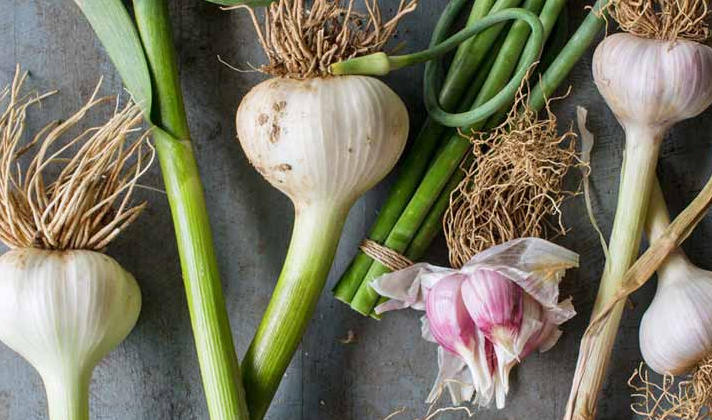
9. Potential side effects and precautions associated with garlic consumption
9.1. Allergic reactions and sensitivities
Although garlic is generally considered safe for consumption, some individuals may experience allergic reactions or sensitivities to it. Reactions can range from mild skin irritations to more severe symptoms, such as difficulty breathing, swelling, and anaphylaxis. This section will discuss the various types of allergic reactions and sensitivities that may be associated with garlic consumption, the potential allergens responsible for these reactions, and how to identify and manage such reactions.
9.2. Digestive issues
Some individuals may experience digestive issues, such as bloating, gas, heartburn, or nausea, after consuming garlic, particularly in large quantities or when consumed raw. These issues are often related to the sulfur-containing compounds in garlic, which can cause irritation to the gastrointestinal tract. This section will explore the potential digestive issues associated with garlic consumption, the factors that may contribute to these issues, and possible strategies for minimizing or managing these side effects.
9.3. Medication interactions
Garlic may interact with certain medications, such as anticoagulants, antiplatelet drugs, and medications for blood pressure, potentially altering their effects or increasing the risk of side effects. This section will discuss the potential interactions between garlic and various medications, highlighting the importance of informing healthcare providers about garlic intake when taking these medications, and the possible precautions that should be taken to avoid adverse interactions.
9.4. Precautions for specific populations
Certain populations, such as pregnant and breastfeeding women, young children, and individuals with pre-existing medical conditions, may need to take extra precautions when consuming garlic. This section will explore the potential concerns and precautions related to garlic consumption in these specific populations, discussing the existing research on safety and potential recommendations for intake.
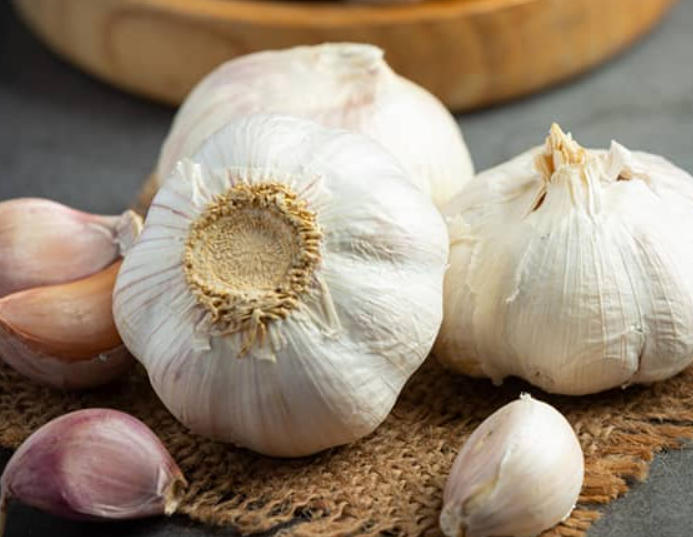
10. Incorporating garlic into a healthy diet
10.1. Culinary uses and preparation methods
Garlic is a versatile ingredient that can be used in a wide variety of dishes and cuisines, imparting its unique flavor and aroma to enhance the taste of various recipes. It can be consumed raw, cooked, or as a seasoning in the form of garlic powder, granules, or flakes. This section will discuss the culinary uses of garlic, exploring different preparation methods, such as mincing, crushing, roasting, and fermenting, and providing tips for incorporating garlic into various dishes and recipes.
10.2. Maximizing health benefits through preparation and storage
The health benefits of garlic can be influenced by factors such as the method of preparation, cooking, and storage. For example, crushing or chopping garlic can increase the formation of allicin, while excessive heat can reduce the bioavailability of some of its beneficial compounds. This section will provide guidance on how to maximize the health benefits of garlic through proper preparation, cooking, and storage techniques, highlighting the best practices for preserving and enhancing its bioactive compounds.
10.3. Recommended intake and serving suggestions
Although there is no specific recommended daily intake of garlic, most studies suggest that consuming one to two cloves of raw garlic per day can provide significant health benefits. This section will discuss the general guidelines for garlic intake, taking into consideration factors such as age, health status, and individual tolerance. Additionally, this section will offer serving suggestions and tips for incorporating garlic into a balanced and healthy diet, providing ideas for enjoyable and nutritious meals that feature this flavorful and health-promoting ingredient.
11. Traditional and modern uses of garlic in alternative medicine
11.1. Historical perspective on garlic’s medicinal uses
Throughout history, garlic has been used in various cultures as a traditional remedy for a range of ailments, from respiratory issues and digestive problems to wound healing and infection prevention. This section will provide an overview of the historical perspective on garlic’s medicinal uses, exploring its role in traditional medicine practices such as Ayurveda, Traditional Chinese Medicine, and ancient Egyptian and Greek medicine.
11.2. Modern applications in herbal medicine
In modern herbal medicine, garlic continues to be used for its diverse health benefits, often in the form of supplements, extracts, and essential oils. This section will discuss the various forms of garlic available in herbal medicine, highlighting their potential applications in addressing common health issues and supporting overall well-being. Additionally, this section will explore the current state of research on the effectiveness of these garlic-based products and their potential role in integrative healthcare practices.
11.3. Safety and efficacy considerations
While garlic is generally considered safe when consumed as part of a balanced diet, it is important to consider the safety and efficacy of garlic-based products used in alternative medicine. Factors such as dosage, formulation, and quality can influence the safety and effectiveness of these products. This section will discuss the potential risks and benefits associated with the use of garlic in alternative medicine, emphasizing the importance of consulting with healthcare professionals, and considering evidence-based information when choosing to incorporate garlic-based products into a healthcare regimen.
12. The role of garlic in sustainable agriculture and ecological practices
12.1. Garlic as a natural pesticide and fungicide
Garlic has demonstrated potential as a natural pesticide and fungicide due to its antimicrobial properties, making it a valuable tool in sustainable agriculture. It can help protect plants from pests and diseases without the use of harmful chemicals that can damage the environment and human health. This section will discuss the current research on the use of garlic extracts and garlic-based preparations in agricultural settings, exploring their effectiveness, potential mechanisms of action, and benefits for sustainable and organic farming practices.
12.2. Companion planting and biodiversity
Companion planting is an ecological practice that involves growing different plants in close proximity to support their growth, health, and productivity. Garlic can be a valuable companion plant due to its strong aroma, which can help repel pests and attract beneficial insects, as well as its ability to improve soil quality through its deep root system. This section will explore the benefits of garlic in companion planting, discussing its potential role in promoting biodiversity, enhancing crop yields, and supporting sustainable agriculture practices.
12.3. Cultivation practices and environmental impact
As a widely cultivated crop, garlic production can have both positive and negative impacts on the environment. This section will discuss various aspects of garlic cultivation, including the use of resources such as water, soil, and energy, as well as the management of waste and emissions. Additionally, this section will explore strategies for minimizing the environmental impact of garlic cultivation, such as adopting sustainable farming practices, improving crop efficiency, and promoting the use of local and organic garlic varieties.

